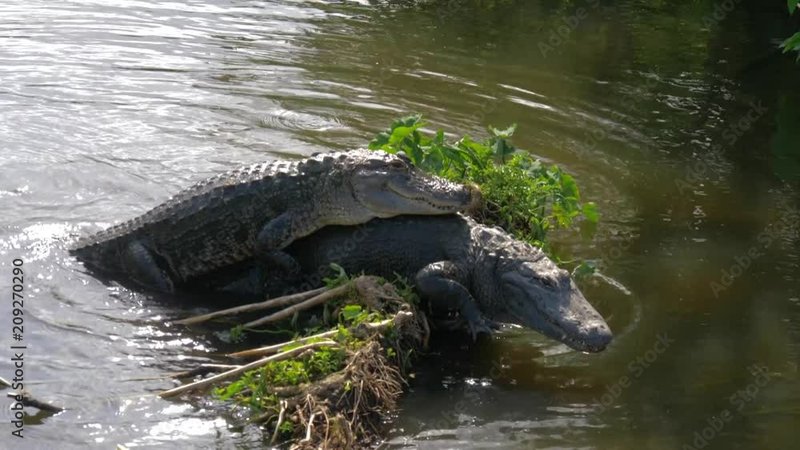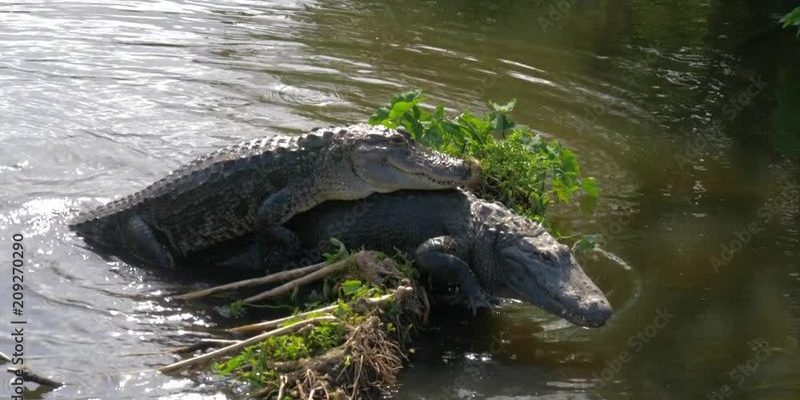
In this article, we’ll dive into the reproductive habits of the American crocodile, from their courtship rituals to the challenges they face raising their young. Just like a captivating nature documentary, we’ll explore how these creatures ensure the survival of their species while navigating their environment. So, let’s get started!
Understanding the American Crocodile’s Mating Season
The American crocodile is known to mate primarily during the warmer months, generally from April to July. During this time, the weather is just right for breeding, and the water levels are typically higher, providing a suitable environment for their young. Here’s the thing: the timing of these events is crucial for the survival of the hatchlings. Mating seasons vary slightly depending on the location, which can impact when and how many babies they’ll have.
You might be wondering how they find their mates. Male crocodiles are quite the showmen! They often engage in elaborate displays to attract females. This includes vocalizations—think of it as a croc’s version of serenading. They produce deep grunts and growls while also performing head bobs and splashing water to show off their strength. It’s like a wild dance party, where the most impressive dancer gets the girl.
Once a female is attracted, things get serious. The male and female engage in what’s known as courtship behavior. This can involve swimming side by side and gentle nudging—a tender moment in the crocodile world!
Nesting Habits of the American Crocodile
After a successful courtship, the female American crocodile prepares to lay her eggs. She typically chooses a sandy or grassy area near the water to build her nest. This is where the magic happens! The nest is built with her own body, using her powerful limbs to dig a pit.
Crocodiles are quite strategic about this. They lay between 20 to 60 eggs at a time, depending on her size and health. Once laid, the female covers the eggs with vegetation and soil. This helps to regulate the temperature and provides some camouflage from predators. Honestly, it’s a bit like tucking in your kids at night—ensuring they’re safe and warm!
One interesting aspect of the American crocodile’s nesting behavior is the temperature-dependent sex determination. This means the temperature of the nest influences the sex of the hatchlings. Warmer nests tend to produce more males, while cooler ones produce females. It’s a fascinating example of how adaptability plays a role in their survival.
The Hatching Process: A Crucial Time
After about 80 to 90 days, it’s hatch time! The little hatchlings are equipped with a special tooth called an *egg tooth*, which helps them break out of their shells. The mother croc plays a significant role in this process. She can sense when the hatchlings are ready to emerge, and she helps them by gently digging them out of the nest.
This moment is intense! The hatchlings call out to their mother as they’re hatching, and she responds with sounds of her own. It’s a critical bonding experience. Once they’re out, the mother carefully carries them to the water in her mouth. It may seem a bit rough, but it’s actually a tender moment in the crocodile world.
But here’s the kicker: these hatchlings are vulnerable. They face numerous threats from predators like birds, snakes, and even other crocodiles. This is where the mother’s protection becomes vital. She stays close by, watching over them during their early days.
Raising the Young: A Unique Parenting Style
You might think that once the hatchlings are born, the mother crocodile is all done. Not so fast! The American crocodile exhibits a surprising level of parental care. In fact, she will protect her young for several months after they hatch. This protective behavior is a rare trait in reptiles and showcases the importance of nurturing in the animal kingdom.
During this protective period, the mother makes sure her young remain safe from potential predators. She can often be seen herding the hatchlings back to water and defending them against threats. It’s quite a sight—a small army of tiny crocs following in formation behind their mom!
As they grow, the hatchlings gradually become more independent, but they still rely on their mother for guidance. They learn essential survival skills from her, such as how to find food and avoid dangers in their environment. It’s like a wilderness survival class, where mom is the teacher.
Challenges Faced by American Crocodiles During Breeding
Despite their fascinating breeding behavior, American crocodiles face numerous challenges. Habitat loss due to human development is a significant threat. As more wetlands are drained for agriculture or urban expansion, suitable nesting sites become scarce.
Additionally, climate change affects nesting success. Increased temperatures can disrupt the delicate balance needed for hatching, affecting the sex ratio of the hatchlings. This is concerning because a skewed ratio can impact the population’s future.
They also face natural threats from predators and competition with other species. Larger crocodiles, as well as invasive species, can pose a danger to hatchlings. It’s a tough world out there for these little ones.
Conservation Efforts for American Crocodiles
Recognizing the challenges they face, various organizations and government bodies are working hard to protect the American crocodile. Conservation efforts include habitat restoration, legislation against poaching, and public education to raise awareness about the importance of these reptiles in the ecosystem.
Programs that involve local communities in crocodile conservation have shown promising results. By encouraging people to protect their local environment, they understand how crucial it is to preserve the habitats where crocodiles breed and thrive.
Moreover, research and monitoring of populations help scientists understand their behaviors and needs better. This data is vital for creating effective conservation strategies and ensuring the survival of this magnificent species.
The *breeding and reproductive behavior* of the American crocodile is a captivating glimpse into the lives of these remarkable creatures. From courtship displays to the challenges of raising young, their journey is full of surprises and heartwarming moments.
By understanding their behaviors, we can appreciate the delicate balance of life in their habitats. Conservation efforts are more important than ever to ensure these ancient reptiles continue to thrive in our ecosystems. So, the next time you see a crocodile basking in the sun, remember there’s so much more to their story—one that’s worth telling and protecting.

